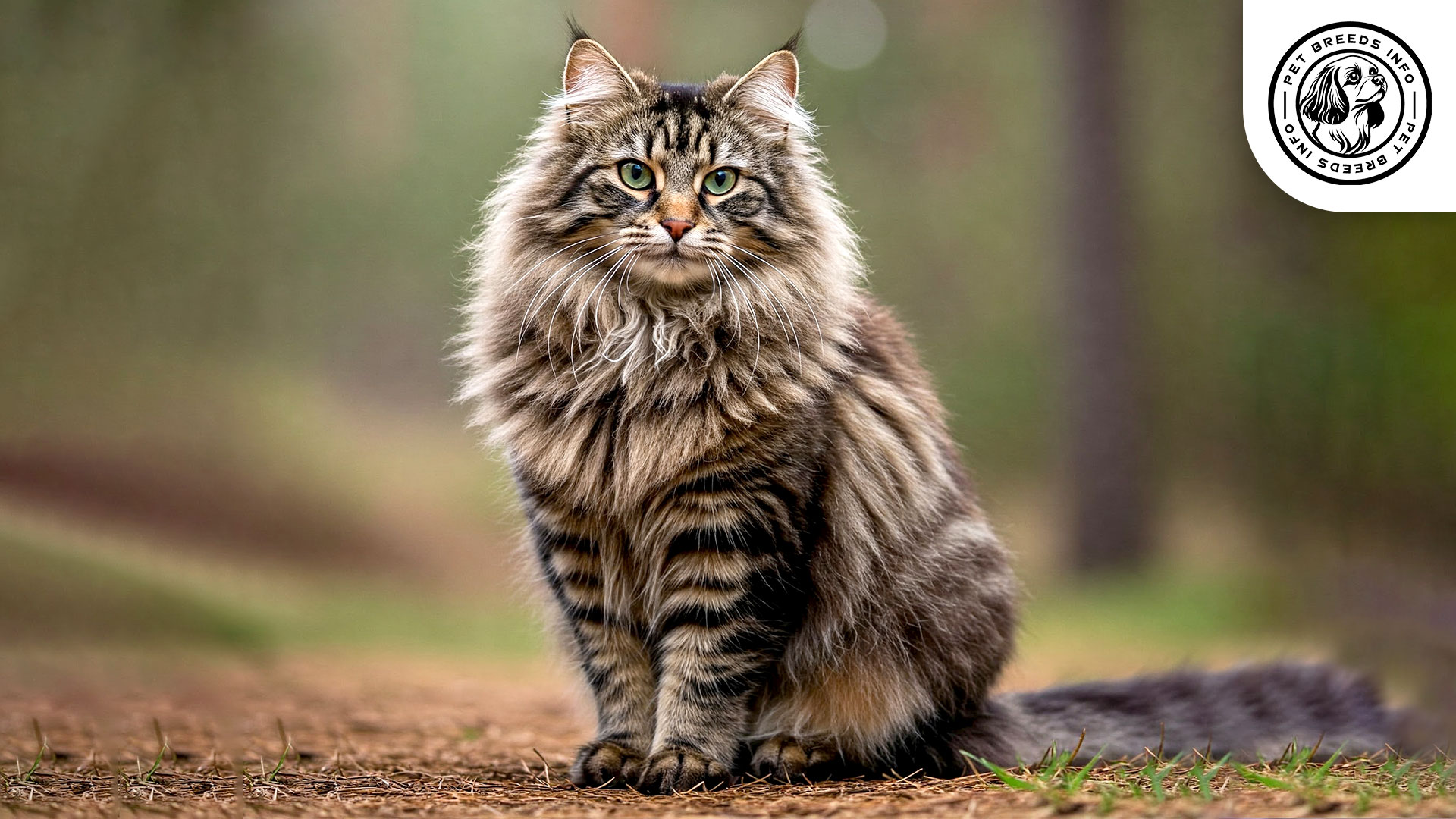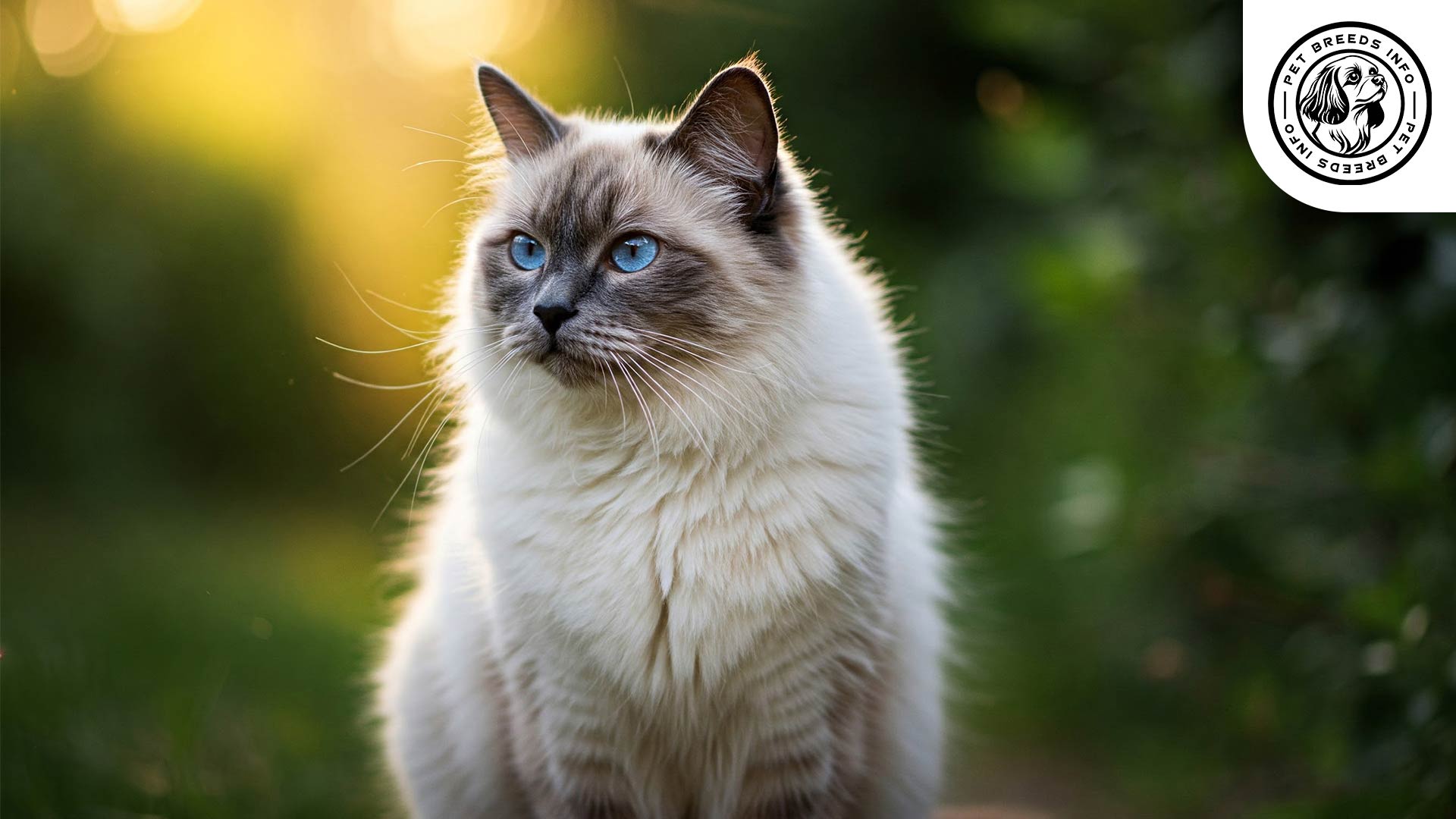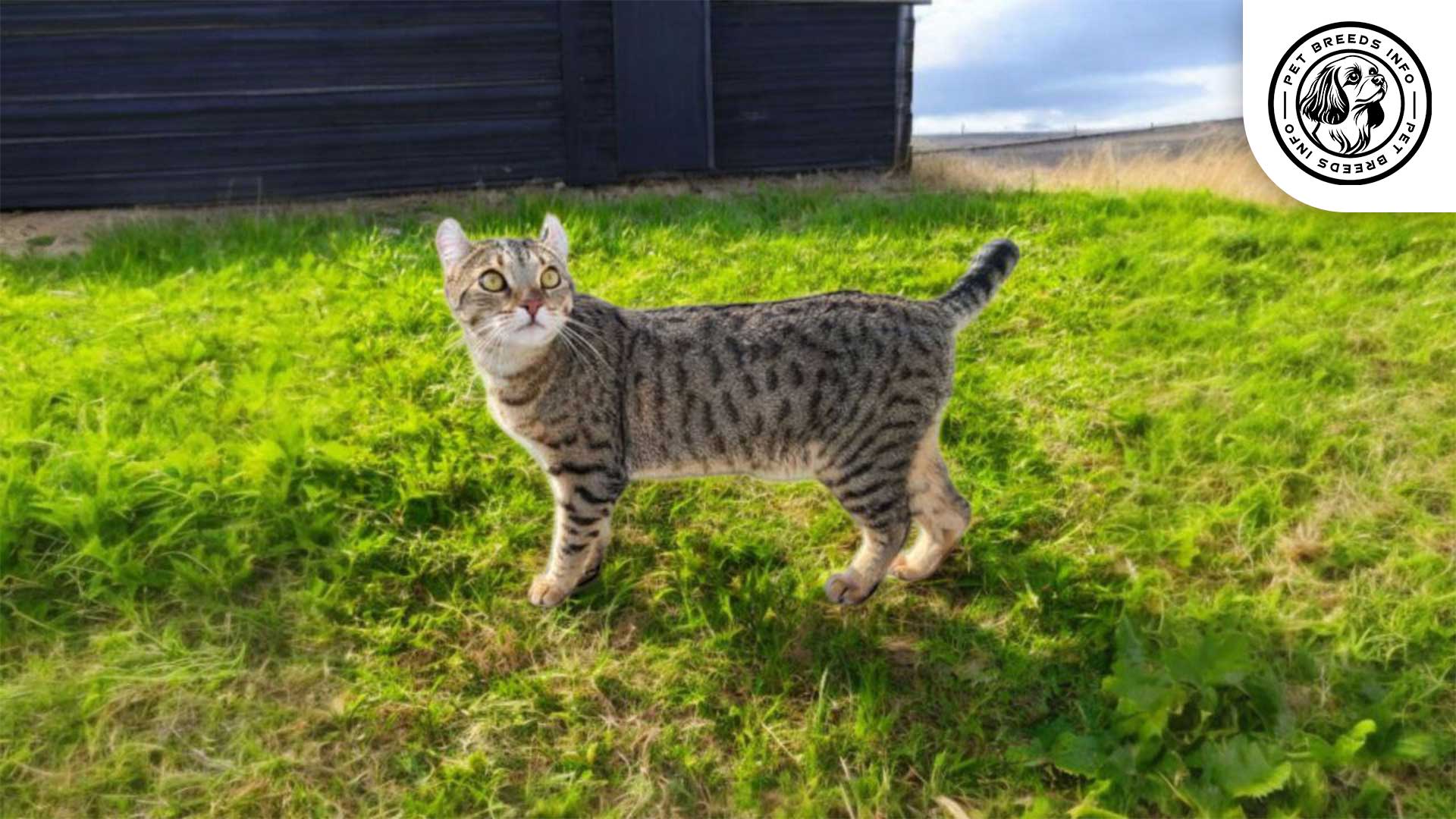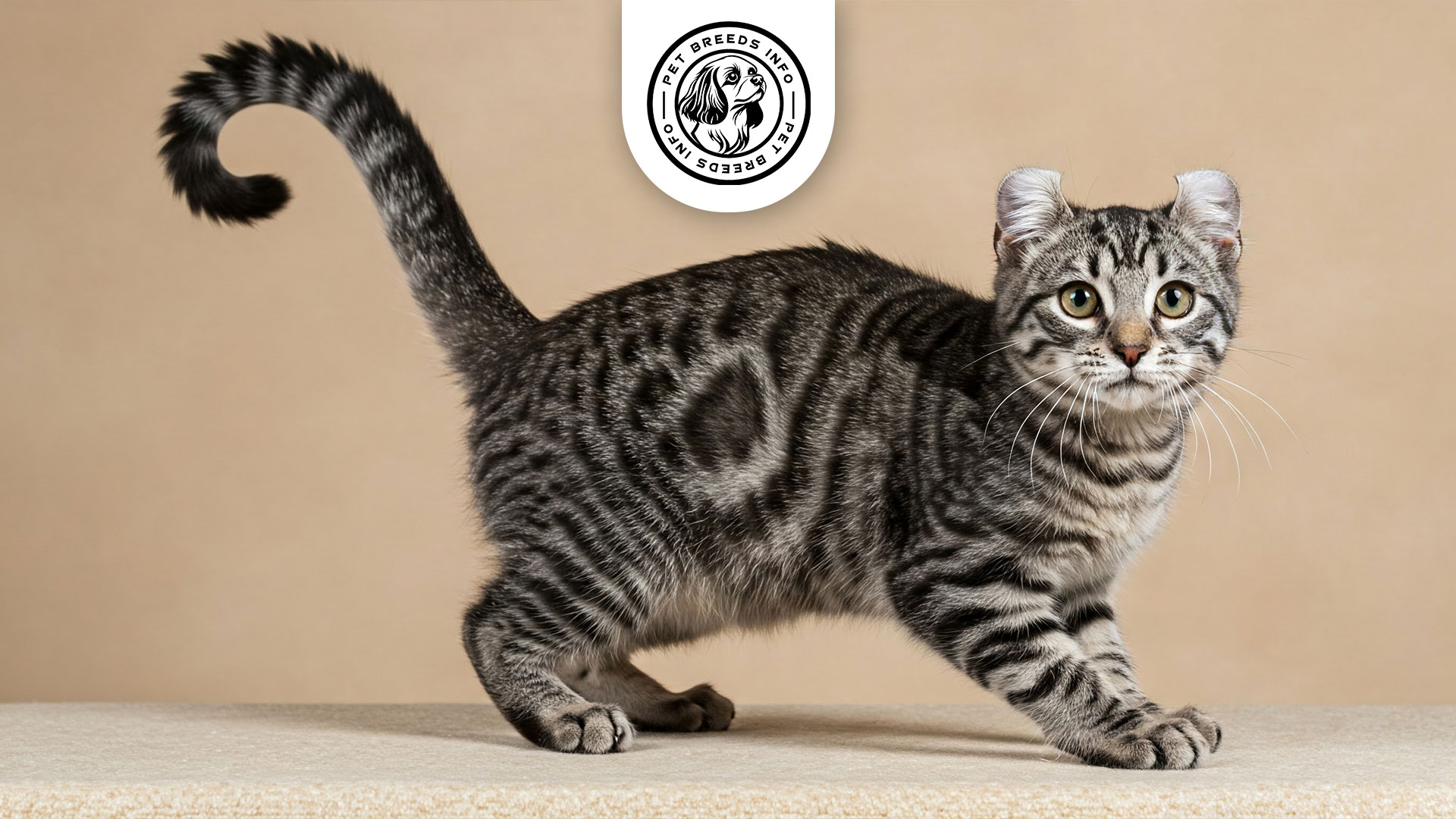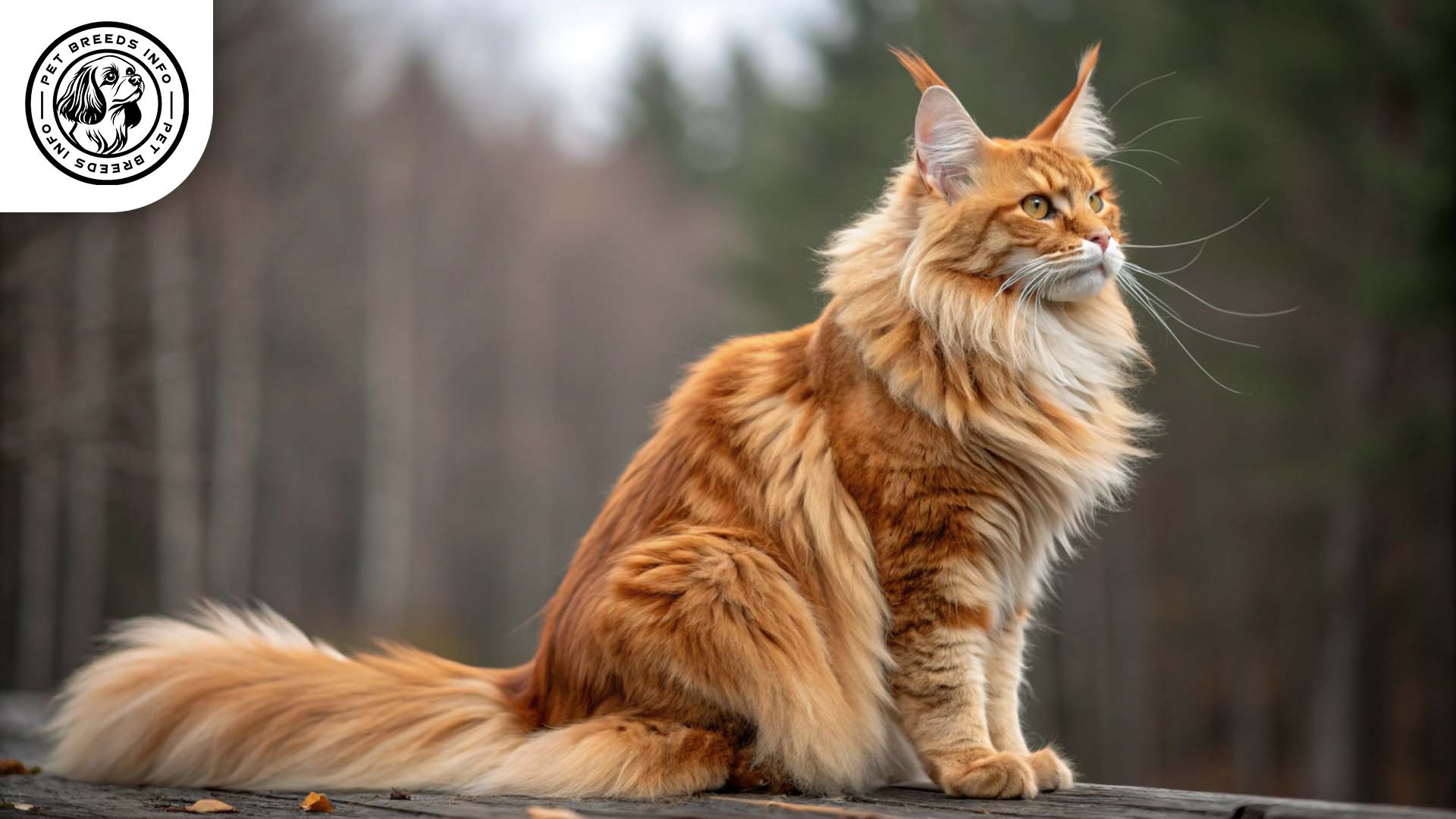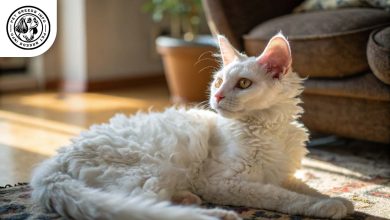Norwegian Forest Cat Breed: Size, Price & Personality
General Introduction of the Breed
The Norwegian Forest Cat, known as “Norsk Skogkatt” in Norwegian, is a majestic and ancient breed originating from Norway. It is sometimes referred to as the “Wegie” by enthusiasts. Believed to have developed naturally in the cold Scandinavian climate, this breed has a long history dating back to Viking times when it was valued for its hunting abilities. Recognized officially in the 20th century, it is now a cherished breed worldwide.
The Norwegian Forest Cat is a majestic, affectionate, and intelligent breed that thrives in active homes and enjoys both independence and companionship.Quick Overview
Affectionate - 80%
Independent - 85%
Intelligent - 90%
Sociable - 75%
Vocal - 30%
Shedding - 70%
Energetic - 75%
72%
100
| Weight | Males: 12-18 lbs (5.5-8 kg), Females: 8-12 lbs (3.5-5.5 kg) |
| Lifespan | 12-16 years |
| Diet | High-protein diet with quality dry or wet food; avoid fillers like corn and wheat |
| Care | Regular grooming, especially during seasonal shedding; needs space to climb and explore |
| Health | Generally healthy but prone to hypertrophic cardiomyopathy (HCM), glycogen storage disease IV (GSD IV), and hip dysplasia |
| Color | Various colors including white, black, blue, red, cream, and tabby variations |
| Nature | Intelligent, affectionate but independent, good with children and other pets, enjoys climbing and interactive play |
| price | $800 – $1500 (higher for champion bloodlines); adoption may be more affordable |
Table of Contents
Physical Characteristics
The Norwegian Forest Cat is a large, muscular breed. Males typically weigh between 12 to 18 pounds (5.5 to 8 kg), while females weigh between 8 to 12 pounds (3.5 to 5.5 kg). They have a semi-long, water-resistant double coat that comes in various colors and patterns, including white, black, blue, red, cream, and tabby variations.
Their eyes are almond-shaped and can be green, gold, copper, or blue. The ears are medium to large, with tufts of fur at the tips, resembling those of a lynx. Their long, bushy tail helps them stay warm in cold weather. Other distinctive traits include a strong build, large paws with tufts of fur between the toes, and a dense ruff around the neck, especially in winter.
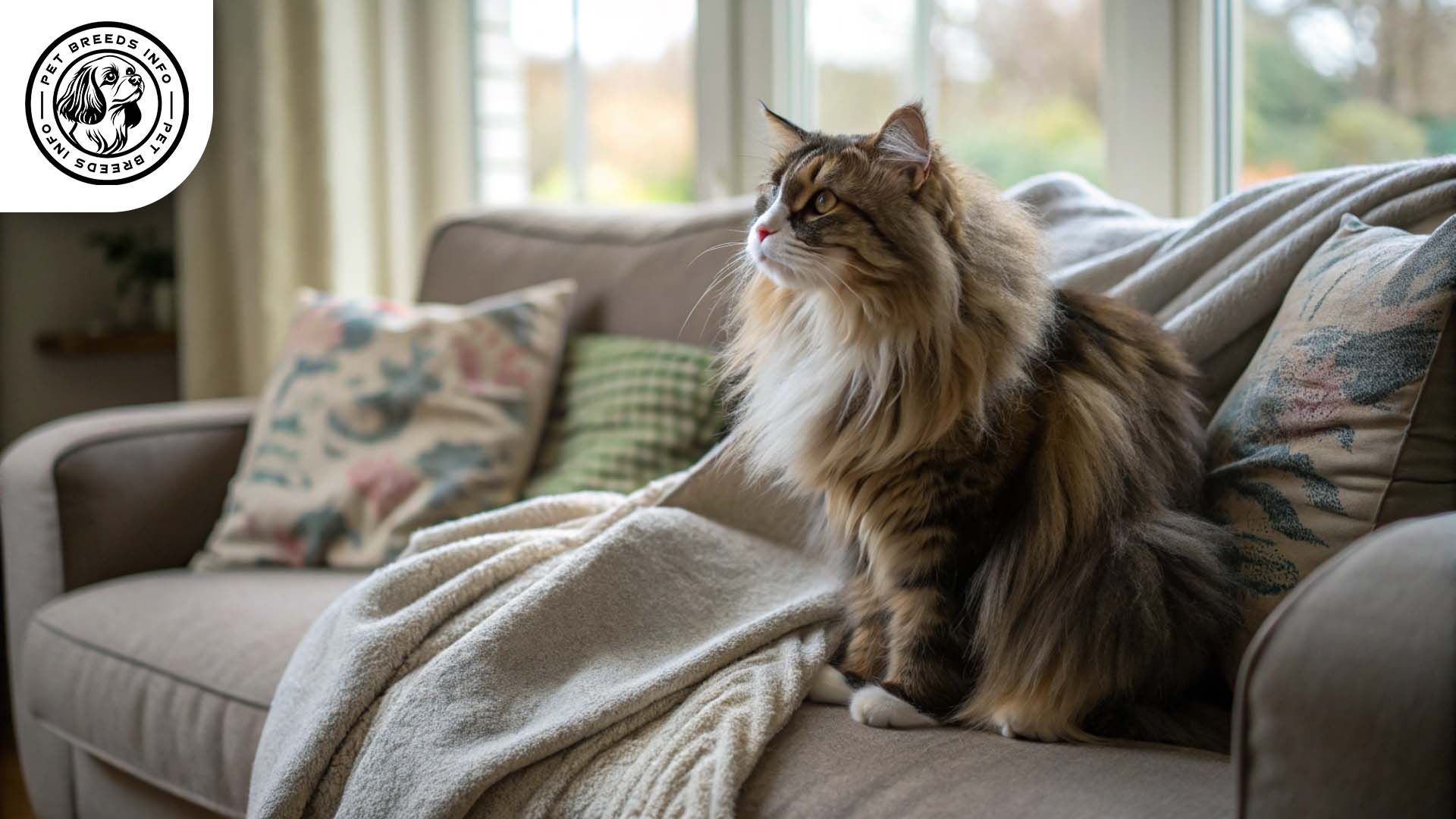
Personality and Temperament
The Norwegian Forest Cat is highly intelligent and adaptable, making it relatively easy to train. It has a moderate to high energy level and enjoys climbing, exploring, and interactive play. Despite its adventurous nature, it forms strong bonds with its owners and enjoys companionship.
It is generally social and affectionate without being overly demanding. This breed is good with children and other pets when properly socialized. Due to its hunting instincts, it enjoys chasing toys and engaging in playful activities. While it can adapt to changes, it prefers a stable, comfortable environment.
Read More: British Shorthair Cat
Care and Maintenance Requirements
The Norwegian Forest Cat is an active breed that requires space for climbing and exploring. It can adapt to apartment living if provided with enough stimulation, but it thrives in a home with vertical space and scratching posts.
Its thick double coat requires regular grooming. Weekly brushing helps prevent matting and reduces shedding, but during seasonal coat changes, more frequent brushing is necessary. It is highly tolerant of cold climates but may struggle in extremely hot conditions.
Routine hygiene care includes occasional bathing, nail trimming, ear cleaning, and dental hygiene. Providing a balanced diet and regular exercise keeps this cat healthy and active.
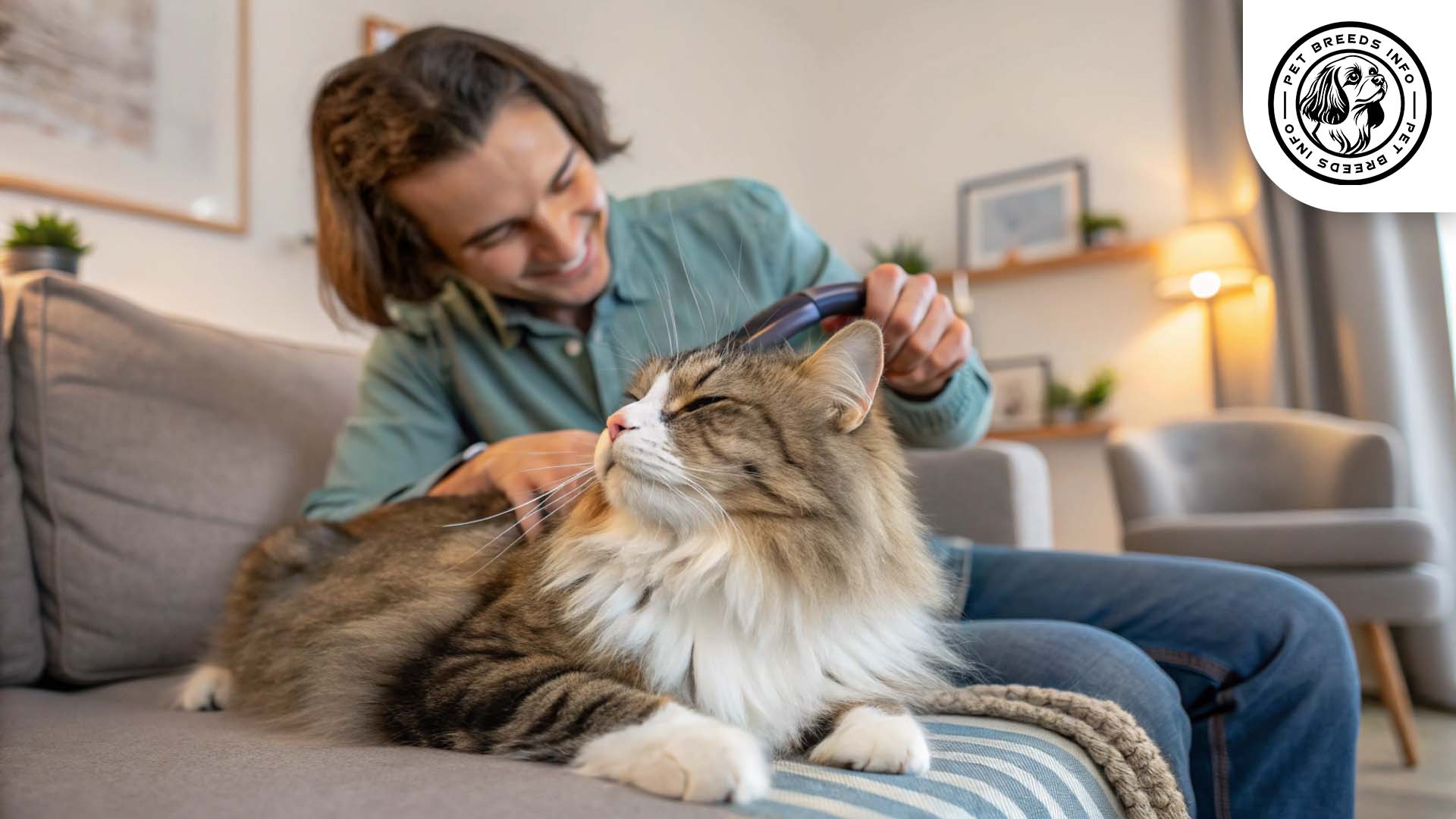
Diet and Nutrition
A high-protein diet is essential for the Norwegian Forest Cat. Quality dry or wet food with real meat as the primary ingredient is recommended. Some owners also opt for a raw or natural diet to mimic the breed’s ancestral nutrition.
Avoid foods with fillers like corn and wheat, as well as toxic foods such as chocolate, onions, garlic, and caffeine. Feed this breed controlled portions to prevent obesity, typically two meals a day for adults.
Read More: Ojos Azules Cat
Health and Common Medical Issues
Norwegian Forest Cats are generally healthy but are prone to certain genetic conditions, including hypertrophic cardiomyopathy (HCM), glycogen storage disease type IV (GSD IV), and hip dysplasia. Regular veterinary checkups help detect potential health issues early.
This breed has a lifespan of 12 to 16 years with proper care. Routine vaccinations, parasite prevention, and dental hygiene are essential for maintaining overall health.
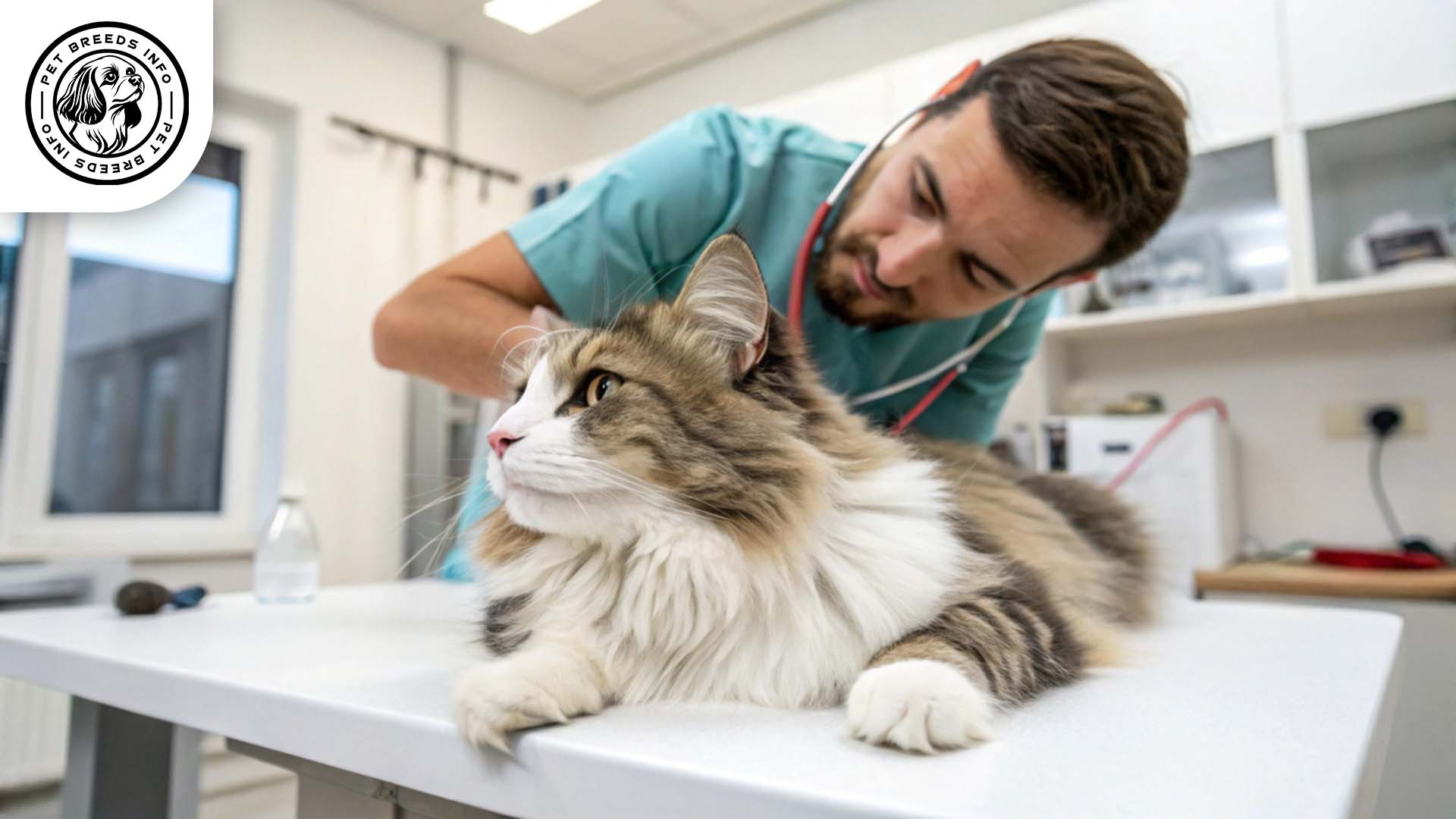
Training and Behavior Management
This breed is intelligent and can be trained with patience and positive reinforcement. Early socialization helps them adapt to different environments and people.
Training should focus on good behavior habits, such as using a scratching post instead of furniture. Reward-based training and interactive toys help prevent boredom and unwanted behaviors.
Interaction with Other Animals and Humans
The Norwegian Forest Cat is friendly and affectionate but maintains some independence. It generally gets along well with children and other pets, especially when introduced early.
It is a great choice for families but also suited for individuals who appreciate a loyal yet self-sufficient companion. While it enjoys being around people, it does not constantly demand attention.
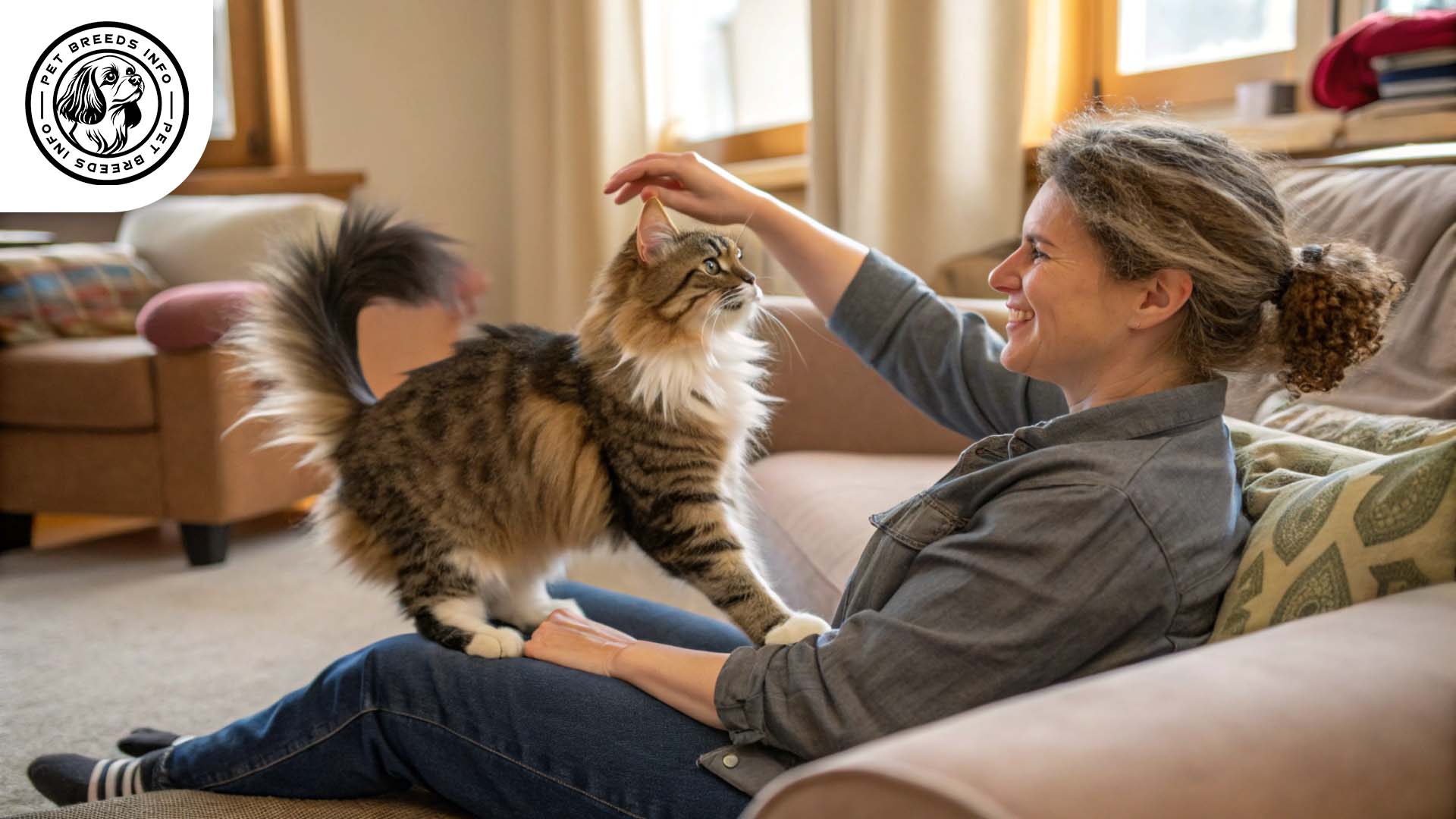
Price and Availability
The cost of a Norwegian Forest Cat varies depending on lineage and breeder reputation. Prices typically range from $800 to $1500, but higher if from a champion bloodline. Adoption from shelters or rescue organizations may be a more affordable option.
When purchasing, always choose reputable breeders who prioritize health testing and ethical practices. Adoption is a great way to give a cat a loving home.
Read More: Ocicat Cat
Conclusion and Final Thoughts
The Norwegian Forest Cat is a loving, intelligent, and adaptable companion, well-suited for various types of households. It thrives in a home where it has space to explore and climb while still enjoying quality time with its owner.
Potential owners should consider the breed’s grooming needs, energy levels, and preference for interaction. If you are looking for a majestic, affectionate, and independent feline companion, the Norwegian Forest Cat might be the perfect choice for you.
FAQ
What is the Norwegian Forest Cat’s temperament like?
The Norwegian Forest Cat is friendly, affectionate, and intelligent. It enjoys companionship but is also independent. It is great with children and other pets, especially when socialized early.
How often should I groom my Norwegian Forest Cat?
The breed has a thick double coat that requires regular grooming. Weekly brushing is recommended, but during seasonal coat changes, more frequent grooming may be needed to prevent matting.
Are Norwegian Forest Cats good with other pets?
Yes, Norwegian Forest Cats generally get along well with other pets, including dogs, when introduced properly. They are also good with children, making them great family pets.
What are the common health problems in Norwegian Forest Cats?
Some common health issues include hypertrophic cardiomyopathy (HCM), glycogen storage disease type IV (GSD IV), and hip dysplasia. Regular vet check-ups can help manage these conditions.
What is the typical lifespan of a Norwegian Forest Cat?
The average lifespan of a Norwegian Forest Cat is 12 to 16 years, provided they receive proper care and regular veterinary attention.
